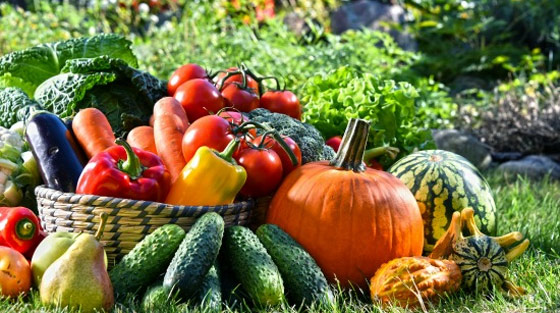This guide was originally published by Tess Pennington at ReadyGardens.com.
Limited Time Offer From Ready Gardens:
FREE Survival Seed Starter Pack (Seriously, 1,000 Seeds For Free!)

There are many different types of emergencies that can have long-term repercussions on our way of life. One of those impacts is on our food system. Due to our aging infrastructure and roadways, emergencies can stall the delivery of goods, leaving a community without food for a given period of time. As well, personal emergencies such as job loss could also wreak havoc and make purchasing food all the more difficult. Because these types of emergencies can come out of the blue, many have taken to gardening as a way to insulate themselves from unforeseen emergencies.
Survival seeds are one of those long-term essential emergency preparedness measures that every family should have. They are lightweight, easy to store, and can provide a family with more than enough food. Having a variety of fast-growing seeds to turn to for growing in the garden or for sprouting will ensure a family can maintain their nutrition until help arrives.
Starting a Survival Garden
While sprouting is a quick, “just-add-water” solution for nutrition, growing a garden takes more expertise and planning. As with any form of preparedness subject, a well laid out plan is essential before beginning. Before a new survival gardener starts this endeavor, there are a few questions to consider.
- Which are the vegetables that grow best in the area?
- How much time do you have to devote to a large garden?
- Do you have enough room to grow a year supply of food?
- Will your survival group be assisting in tending the garden?
- Do you have any physical limitations such as back or should problems, weight issues, etc.?
- How long is your gardening season?
- Do you have the ability to add greenhouses or grow houses to extend your gardening season?
Educating yourself on gardening topics such as micro-farming, soil balance, planting for the seasons, natural insect repellents, seed collection and seed storage could help you better prepare for a long-term emergency. As well, it is important to keep nutrition in mind when planting a survival garden. Vegetables and fruits contribute an important amount of water to the body, as well as vitamins and minerals that help to digest nutrients, prevent illness and disease and helps to maintain a healthy body weight. That said, keep the basics in mind: vegetables, carbohydrates for added calories and fruits for preserving and for added health benefits.
Practice Makes Perfect
There are few people who have had a perfect garden experience the first time out. Many gardeners learn from trial and error and with each garden season, they learn more of what is needed for a bountiful harvest. Therefore, my advice for those wanting to start a survival garden is to start one now to work out any kinks along the way. Find a sunny spot in the yard and get a garden started! Those who have rocky or unhealthy soil could build an above-ground garden and fill it with rich compost and soil to begin. Two to three raised beds with the length of the yard are enough to produce plenty of vegetables.
Good quality soil is a must for garden beds. Soil rich in nutrients will give the plants what they need to grow. Compost is a popular soil amendment added to the garden and can be made with kitchen scraps. This is one way to keep a continuous supply of nutrients in the soil.
10 Seeds to Plant for the Survival Garden
To determine which seeds to add to the garden, consider non-GMO, heirloom quality seeds to produce highly nutritious food, and viable seeds to save for future harvests. If you are new to gardening, start with some favorite beginner garden varieties like radishes, swiss chard, lettuce, carrots, squash and zucchini, cucumbers, cabbage, and beans. These are all hardy varieties that are full of nutrition and will help you learn as you go!
Below is a list of easy-to-grow vegetable and fruit varieties that will also provide a balanced amount of nutrition.
- Allium varieties – A good source of dietary fiber, Vitamin B6, Vitamin C, folate and potassium
- Berries – High in antioxidants, vitamin C
- Beans – Beans are very high in fiber, calcium, Vitamins A, C, and K
- Broccoli – Broccoli is a good source of protein, Vitamins A and K, and carbohydrates
- Carrots – This root crop is a good source of carbohydrates, vitamin A, vitamin C
- Grains – Grains are a good source of carbohydrates, are high in dietary fiber and manganese
- Peppers – High in vitamin A and C
- Potatoes – Potatoes are high in fiber, Vitamin B6, Potassium and Vitamin C and a good source of carbohydrates
- Spinach – Many call this a superfood based upon its large array of vitamins such as Vitamin A, C, iron, thiamine, thiamine, and folic acid.
Potassium - Tomatoes – Tomatoes are a good source of Vitamin A, C, K, E, Potassium, thiamine, and Niacin
Another option for the survival garden is to plant perennials or vegetables that come back on their own each year. Asparagus, Jerusalem artichokes, horseradish, garlic, and herbs of both culinary and medicinal value would make great additions. Keep in mind that some of these perennials, such as asparagus require two years to grow before they produce food. Do research on your part to determine if you wish to plant these perennials in your survival garden.
Create Sustainable Food Production
When you get your survival garden thriving, consider adding other sustainable food sources like small livestock such as chickens, rabbits, and fish, as well as fruit trees like apples, berries, grapes, lemons, and oranges to your operation. Having a wide array of food choices when times get tough will keep spirits up, nutrition high and give each person a high amount of energy. Sustainable food production will be a vital skill in a long-term emergency and understanding what to grow, how to do it, and when to grow will put you at a greater advantage for when that time comes.
Special Offer: FREE Survival Seed Starter Pack (Seriously, 1,000 Seeds For Free!)










0 Comments